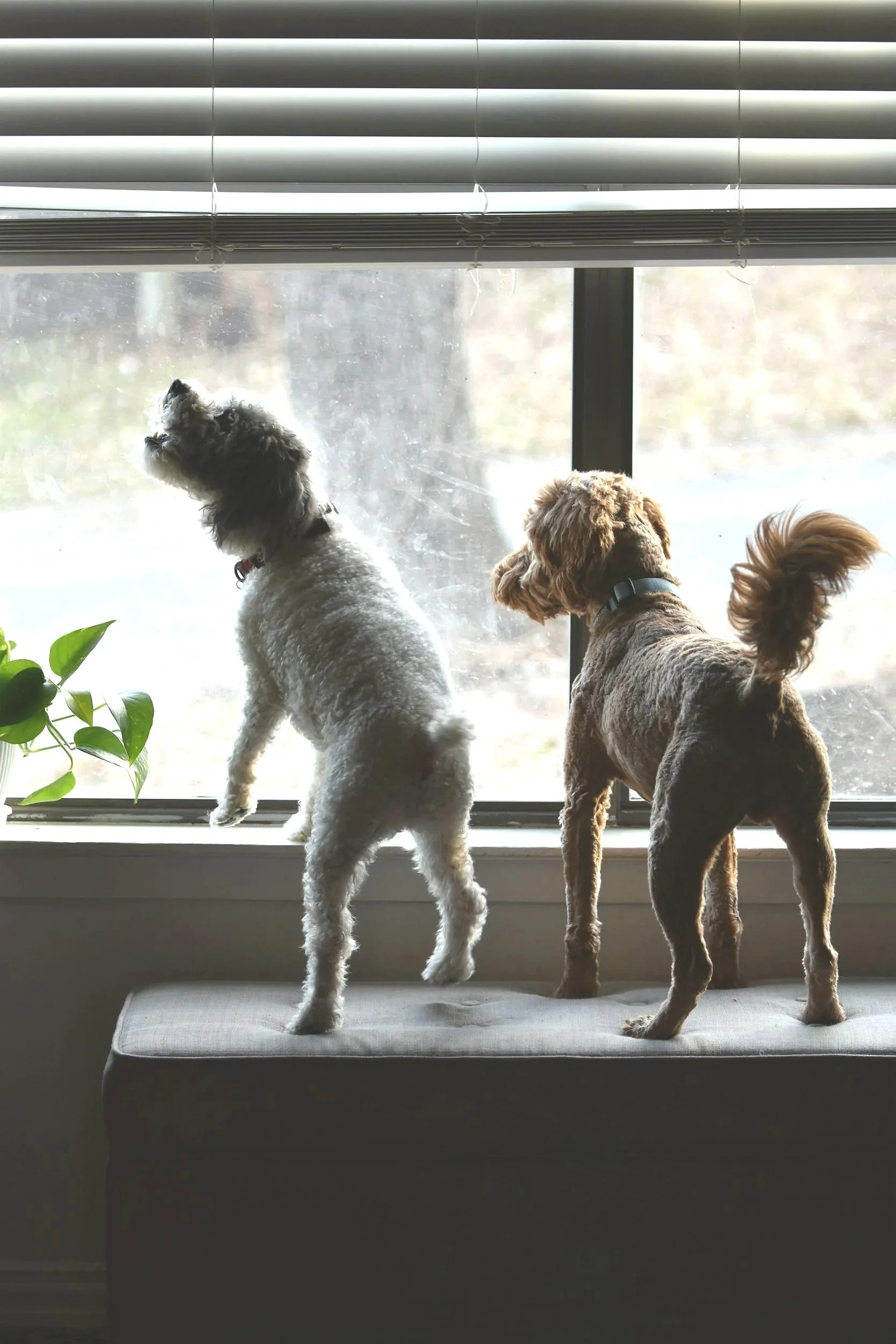Stop barking
How many times have you asked your dog to stop barking or, be “Quiet”?
If it happens often without much improvement, your dog is not getting it. Many times, we think just because the words “quiet” or “hush” mean something to us, they should also mean something to our pups. Truth is, if you haven’t actually taught “quiet” as a cue or prompt, they probably just think you are barking with them.
To stop barking with a cue, you must first turn the experience into a training opportunity. Begin with a bunch of treats in your pocket at a time that your dog might bark, for example, when the doorbell rings. Stop barking exercises are most successful when you can control the environment as much as possible at the beginning. This means you control the stimuli, so if it’s the sound of knocking or a doorbell that usually gets your dog to bark, we will be controlling those.
The timing is crucial and at first, it will be tricky. You are going to feed your dog a treat while they are still quiet, so be ready. They’ll start showing signs of attention before they bark. Some of these signs are quite subtle, like a quick exhale of air from the nostrils, pacing, ears pricking up or a stiff tail going up.
The second you see any of these signs, reward. At this stage all we want is to stop them from barking, eventually you will move on to your dog staying calm and ignoring some of these triggers altogether.
Make sure the treats you are using are high value (very interesting). You may also grab a bunch of treats and throw them on the ground. Like this, you are both rewarding for not barking and distracting them for a longer period of time, which will help keep them under threshold.
Start on your own next to the door, or with the help of a family member or friend. Make a little noise outside with the door ajar, and reward your dog. This will seem silly at first, but we want it to be easy for your dog not to bark, we want to set them up for success.
Try this a couple of times and as they start looking for you and the treats instead of the door, start adding a cue. When you choose your cue remember to use something new, if you have spent the last couple of months using “no bark” unsuccessfully, then use “hush” or “quiet” or whatever you can come up with.
Once you can ring your doorbell or knock loudly without your dog barking, ask a friend for help. Tell your friend that it will take a minute to open the door so you can work with your dog calmly and try the exercise several times in a row.
Increase the level of difficulty by moving to different parts of your home to seem more natural, having several visitors, heavy doorbell ringers, etc.
As you move forward in training, we will move from stopping barking to what we truly want instead, a relaxed dog. But for now, all we want is for your dog not to bark at every minor trigger.
Remember, always keep your voice soft and gentle, there is really no point in raising it. If you do, all you end up doing is barking with your dog.
Good luck with it. If you have any questions or comments, I am a phone call or click away.

